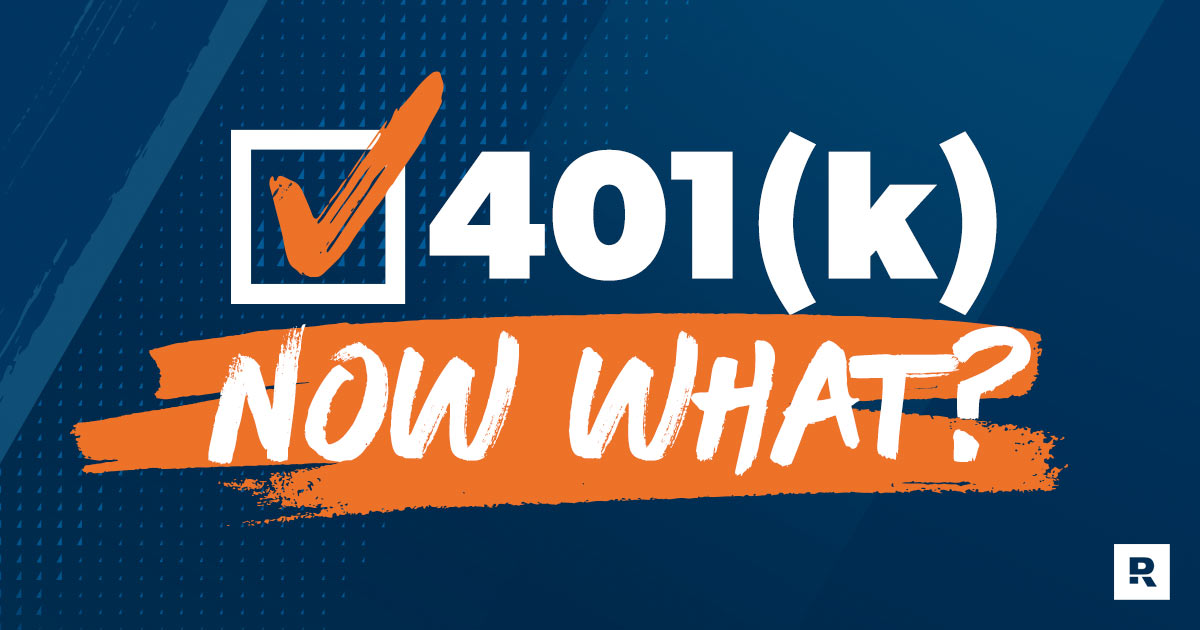Where Do I Invest After I’ve Maxed Out My 401(k)?
8 Min Read | Mar 5, 2025

Key Takeaways
- The first place you should look to continue investing after maxing out your workplace retirement plan is a traditional or Roth IRA.
- Investing in a brokerage account won’t get you any tax breaks, but you can take money out at any time and for any reason without having to worry about early withdrawal penalties.
- Buying a rental property and flipping houses can be great ways to earn extra income, but there’s risk and a lot of work involved.
- Don’t invest in real estate beyond your primary residence unless you’re completely debt-free and can pay cash for a property.
- HSA investments can help with more than just health expenses. When you turn 65, you can take out money for anything you like, but you’ll pay taxes on it. The only exceptions are medical expenses you pay with your HSA—they’ll still be tax-free!
If you’re maxing out your 401(k), that means you’re contributing the maximum amount allowed to your workplace retirement plan. In other words, you’re making huge strides in building wealth for your future!
You’re laser-focused, you’ve set your financial goals, and you’re working hard toward them—that’s a great accomplishment. Go ahead, take yourself out for a steak dinner to celebrate!
And here’s another reason to celebrate: Once you’ve maxed out your workplace retirement plan—whether it’s a 401(k) or 403(b)—you don’t have to stop there. You still have other investing options for letting more of your money work for you.
Here are a few important ways you can continue to make headway with your investments and retirement savings!
1. Invest in a Traditional or Roth IRA.
An individual retirement account (IRA) lets you invest for retirement outside of your workplace—and it’s the first place you should try to invest beyond your workplace retirement plan.
Just in case you’re wondering: Yes, you can put money into a traditional or Roth IRA and your 401(k) at work. For 2024, you can invest up to $7,000 in IRAs ($8,000 if you’re 50 or older).1
With a traditional IRA, you’ll likely be able to deduct the full amount of the contributions—which means you’ll pay less in income taxes this year. That’s the good news. But the bad news is, you will have to pay taxes later when you take money out of the account in retirement, and who knows what tax bracket and tax rate you’ll be looking at by then!
If you’d rather not have to worry about taxes in your golden years, you can opt for a Roth IRA instead. However, there are some income limits that might prevent you from opening and contributing to a Roth IRA.
- For 2024, you can contribute up to the maximum amount if your gross income is less than $146,000 for single and head of household filers, and less than $230,000 for married couples filing jointly.
- If you earn between $146,000 and $161,000 ($230,000 and $240,000 for married couples), you’ll only be able to make a reduced contribution.
- Once your income rises above $161,000 ($240,000 for married couples), you won’t be able to make any contributions to a Roth IRA.2
We’re super fans of Roth IRAs, and for good reasons. Here are some of the benefits of a Roth IRA:
- Tax-free growth: Your contributions are made with after-tax dollars, which means the money inside your account grows tax-free. Sweet!
- Tax-free withdrawals in retirement: That’s right, you won’t have to pay taxes when you start taking out money during your retirement.
- No required minimum distributions (RMDs): You’re not required to take distributions at a certain age, unlike the traditional IRA (which requires withdrawals starting at age 73).3
- No age restrictions on contributions: You can keep contributing to your Roth IRA if you choose to work past retirement age, as long as your income still falls within the income limits.
- Pick your beneficiaries: You can choose beneficiaries to inherit your Roth IRA, and they’ll be able to use the money in the account tax-free too.
2. Open a brokerage account.
You’ve maxed out your 401(k). You’ve maxed out your IRA. Does that mean you’re done? Not so fast!
Market chaos, inflation, your future—work with a pro to navigate this stuff.
If you want to invest even more, you can open a brokerage account—also known as a taxable investment account—with an investment management company or brokerage firm.
You won’t get any sort of tax break from Uncle Sam on a brokerage account, which is why you should only invest in one once you’ve maxed out your tax-advantaged options like a 401(k) and IRA.
But hey—it’s a lot better than putting your money under the mattress! Here are some of the biggest advantages of brokerage investments:
- No required minimum distributions (RMDs): With a 401(k) or traditional IRA, you have to start taking money out once you reach a certain age. Not so with a brokerage account.
- No income limits: You can invest in a brokerage account even if you make a lot of money. No IRS limitations here.
- No contribution limits: You can invest as much as you want.
- More flexibility: You can take money out of the account at any time and for any reason without having to worry about early withdrawal penalties.
The downside of a taxable investment account is—you guessed it—the taxes. You’ll pay capital gains taxes on the growth of those investments because the government is, well, the government. Uncle Sam wants his share.
Keep in mind that working with a financial advisor who can give you guidance on the pros and cons of opening a brokerage account is always a good idea.
Invest Like No One Else
From investing advice to wealth management, find a SmartVestor Pro who speaks your language.
Ramsey Solutions is a paid, non-client promoter of participating pros.
3. Invest in real estate.
Whether you’re thinking of flipping houses or becoming a landlord, investing in real estate is a great way to make money after maxing out your retirement accounts.
But if you think you’re ready to build your own real estate empire overnight after watching a few fixer-upper shows or some TikTok videos, you’re in for a rude awakening. Buying and managing rental properties takes a lot of time, money, patience and hard work—so you need to know what you’re getting yourself into before you dive in.
Here are a few guidelines to follow if you want to invest in real estate the right way and not turn your real estate dream into a nightmare:
- Pay off your own mortgage first. Paying off your personal residence takes risk off the table and gives you a lot more money and focus to put toward investing in an investment property. Imagine the wealth you could build by investing a house payment every month!
- Pay in cash. Never go into debt to buy a rental property. Remember, debt always equals risk—and you’ll sleep better at night knowing your investment properties belong to you, free and clear!
- Stay local. When you live far away from your real estate properties, it’s much more difficult to keep tabs on what’s happening with your investment.
- Prepare for problems. Make sure you have an emergency fund specifically for your real estate so you can cash flow any taxes, repairs or other maintenance issues that pop up.
- Work with a real estate agent. Finding a good real estate agent is essential. They’ll help you find properties in the right areas and navigate the many challenges you’ll encounter as a real estate investor.
If you follow these guidelines, you’re well on your way to making your real estate investments work for you. There are a few different ways you can make money as the owner of an investment property:
- You’ll make money over the long term as the value of your property increases—especially when you buy a house at a low price, then ride out any downturns in the market, and sell it when the value has gone up.
- If you reinvest your profits into another similar property within a certain period of time, the 1031 exchange allows you to avoid paying capital gains tax. That alone can be a huge savings win!
- You also make money with rental income. This is why most investors buy property. Once you get a quality renter, your property will generate monthly income. But just keep in mind that HVACs break down and garbage disposals quit working, so you’ll either be paying for a property management company to handle repairs and maintenance or you’ll be the repair and maintenance guy.
Keep Boosting Your Investing Know-How
Every two weeks, the Ramsey Investing Newsletter will send you practical insights, easy-to-use resources, and the latest investing news. All explained in plain English.
4. Take advantage of your HSA.
That’s right, your Health Savings Account (HSA) could become a secret weapon to help you save for retirement.
HSAs are tax-advantaged savings accounts that are paired with a high-deductible health plan (HDHP). (If you don’t have an HDHP, you won’t be able to contribute to an HSA.)
While HSAs are designed first and foremost to help you pay for medical expenses, they can also help you save a little extra for retirement too. For 2024, individuals can save up to $4,150 in their HSAs (those with family coverage can contribute up to $8,300).4
The great thing about HSAs is they come with a triple tax advantage:
- The money you contribute goes in tax-free.
- Your contributions grow tax-free.
- As long as you take money out to pay for qualified medical expenses, you won’t pay taxes on withdrawals.
And on top of that tax-advantaged triple threat, once you’re 65 years old, your HSA basically becomes a traditional IRA. That means you can take out money for anything you’d like! But you’ll pay taxes on it when you do—just like a traditional IRA.
Also like with an IRA or 401(k), your HSA provider will give you several investment options to choose from. Keep it simple and spread your investment across four types of good growth stock mutual funds: growth, growth and income, aggressive growth and international.
Work With an Investment Pro
Are you thinking about investing in one or more of these options after maxing out your 401(k) at work? Before you make any big decisions, it’s always a good idea to reach out to a tax advisor and an investment pro first.
They’ll help you navigate the muddy tax waters and avoid making mistakes that could cost you lots of time and money. Think of them as power tools to help you build your financial future!
Next Steps
- The first place we recommend investing after you’ve maxed out your 401(k) is an IRA. Learn more about opening a Roth IRA and reach out to a SmartVestor Pro to get started.
- If you aren’t taking advantage of your workplace’s HSA, set up a meeting with your HR representative and discuss your options.
- Before buying investment property, make sure you are debt-free, including the mortgage on your own home.
- Meet with a financial advisor to talk about your investing options and their pros and cons for your situation. You can find a financial advisor or investment pro through our SmartVestor program.
This article provides general guidelines about investing topics. Your situation may be unique. To discuss a plan for your situation, connect with a SmartVestor Pro. Ramsey Solutions is a paid, non-client promoter of participating Pros.



